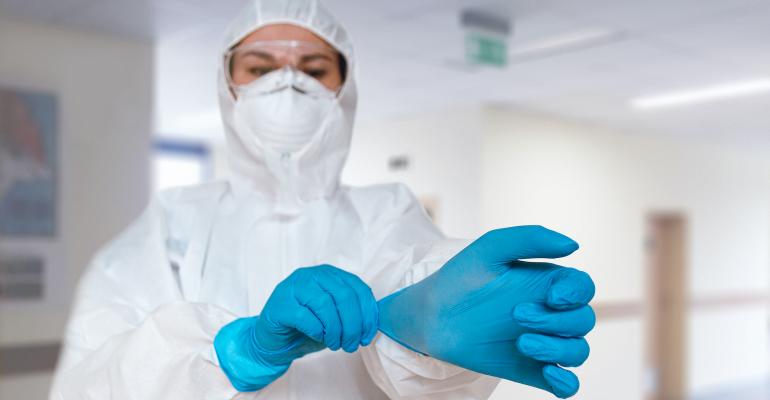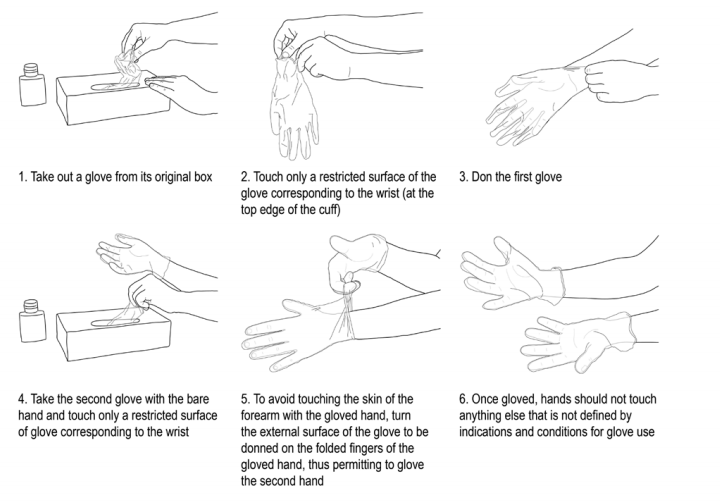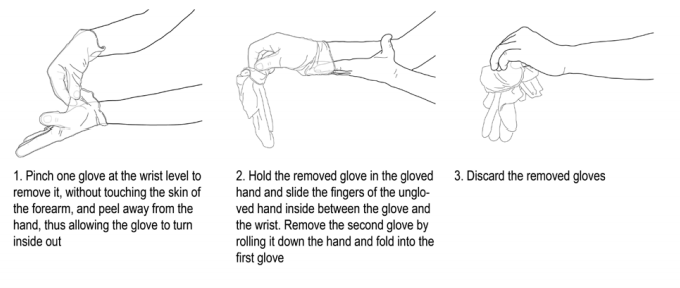Call Us: +8618816802430/+8618816800624/+8618816802041
Views: 66 Author: Site Editor Publish Time: 03-16-2022 Origin: Site

Medical gloves are defined as disposable gloves used during medical procedures; they include:
1. Examination gloves ( non sterile or sterile)
2. Surgical gloves that have specific characteristics of thickness, elasticity and strength and are sterile
3. Chemotherapy gloves - these gloves are not addressed within this document
Rationable for using medical gloves:
Medical gloves are recommended to be worn for two main reasons:
1. To reduce the risk of contamination of health-care workers hands with blood and other body fluids.
2. To reduce the risk of germ dissemination to the environment and of transmission from te health-care worker to the patient and vice versa, as well as from one patient to another.
Gloves should therefore be used during all patient-care activities that may involve exposure to blood and all other body fluid( including contact with mucous membrane and non-intact skin),
during contact precautions and outbreak situations.
The efficacy of gloves in preventing contamination of health-care workers' hands and helping to reduce transmission of pathogens in health care has confirmed in several clinical studies.
Nevertheless, health-care workers should be informed that gloves do not provide complete protection against hand contamination.
Pathogens may gain access to the caregivers' hands via small defects in gloves or by contamination of the hands during glove removal.
Hand hygiene by rubbing or washing remains the basic to guarantee hand decontamination after glove removal.
Type of gloves to be used:
As a general policy, selection of non-powdered gloves is recommended since this avoids reactions with the alcohol-based handrub in use within the health-care facility.
Summary of key messages for practical medical glove use:
• Gloves are effective in preventing contamination of health-care workers’ hands and helping reduce transmission of pathogens dependent upon two critical factors:
– They are used appropriately
– Timely hand hygiene is performed using the method of hand rubbing or hand washing.
• Safe glove use involves:
– Using the correct technique for donning gloves that prevents their contamination
– Using the correct technique for removing gloves that prevents health-care workers’ hands becoming contaminated
(see figure Technique for donning and removing non-sterile examination gloves).
• The unnecessary and inappropriate use of gloves results in a waste of resource and may increase the risk of germ transmission.
• Health-care workers should be trained in how to plan and perform procedures according to a rational sequence of events and to use
non-touch techniques as much as possible in order to minimize the need for glove use and change.
• If the integrity of a glove is compromised (e.g., punctured), it should be changed as soon as possible and complemented with hand hygiene.
• Double gloving in countries with a high prevalence of HBV,
HCV and HIV for long surgical procedures (>30 minutes), for procedures with contact with large amounts of blood or body
fluids, for some high-risk orthopaedic procedures, is considered an appropriate practice.
• Use of petroleum-based hand lotions or creams may adversely affect the integrity of latex gloves and some alcohol-based handrubs
may interact with residual powder on health-care workers’ hands.
Technique for donning and removing non-sterile examination gloves
When the hand hygiene indication occurs before a contact requiring glove use, perform hand hygiene by rubbing with an alcohol-based handrub or by washing with soap and water.
1.How to don gloves


2. How to remove gloves

Email Us: sales@pidegreegroup.com
Add: NO.8 2nd Hezhan Street, Baiyun District, Guangzhou City, Guangdong Province, China.
Add:PT 583(Lot 942),Jalan Harmoni 3,Simpang 3 Ijok,45600 Bestari Jaya, Selangor D.E ,Malaysia.
Mob: +8618816802430/+8618816800624/+8618816802041